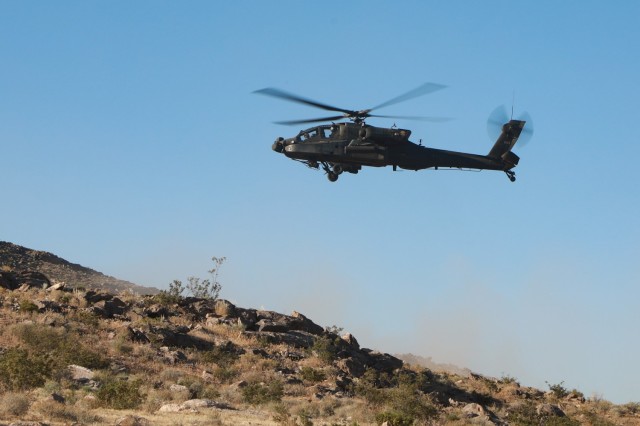Aviation Soldiers, passengers, and their aircraft will be afforded an advanced level of protection from enemy threats due to the recent milestone of Initial Operational Capability (IOC) for the Common Infrared Countermeasure Systems (CIRCM) on more than 100 Army aircraft.
CIRCM is the next generation lightweight, laser-based infrared countermeasure system that interfaces with Missile Warning Systems (MWS) to defeat current and emerging missile threats, which target rotary-wing, tilt-rotor and small fixed-wing aircraft across the DoD. CIRCM receives hand-off from the MWS and employs a pointing and tracking system to track and defeat incoming missiles. CIRCM utilizes Open Systems Architecture, which allows flexibility with software and hardware refreshes to keep pace with future threats.
The IOC included both the installation and training of the systems on aircraft across multiple Army installations. These systems have had the benefit of lessons learned during the past decade in conjunction with the Aviation Community. CIRCM’s predecessor, the Advanced Threat Infrared Countermeasure (ATIRCM) provided protection for the Chinook for several years prior to fielding the new, lighter, more capable system, and delivered invaluable insight into how to best employ the technology.
The path to IOC was laid by engineers, test teams, logisticians, and production managers who tested the system through various labs and free-flight missile testing to ensure the system is the most technologically advanced infrared countermeasure system to protect the lives of Army Aviators.
“The IOC for CIRCM reflects the tremendous partnership between the acquisition community, R&D and testing organizations, Soldiers from the Aviation Branch as well as our industry partners,” said Lt. Col. Adrian Watts, Product Manager for Infrared Countermeasures. “The system is a key enabler for Multi-Domain Operations in the Army 2030 Force and this marks an important step in Army modernization by fielding a critical capability that protects U.S. Army aircrews and aircraft against MANPAD threats in a contested environment.”
To ensure CIRCM is flexible enough to meet emerging threats, the system utilizes a modular and open systems approach that can rapidly incorporate Science and Technology (S&T) advancements to help ensure survivability and allow our Soldiers to continue their mission. The approach to CIRCM is designed to foster innovation, development, demonstration, and transition of critical technologies into materiel solutions that will enhance our current capabilities and enable advancements in future force capabilities.
As Army Aviation looks to evolve with the Future Vertical Lift products (Future Attack Reconnaissance Aircraft (FARA) and Future Long Range Assault Aircraft (FLRAA)), the CIRCM system is well positioned to assist in future readiness with its reduced weight and increased performance over legacy systems. CIRCM weighs less than 120lbs when installed on Blackhawk and Apache aircraft, and less than 155lbs on Chinooks, which is a 62% weight reduction from the ATIRCM system. It is also more capable of defeating emerging threats. CIRCM installs on the current fleet will help inform FARA and FLRAA requirements due to its selection as the system to perform this capability for Future Vertical Lift platforms.
